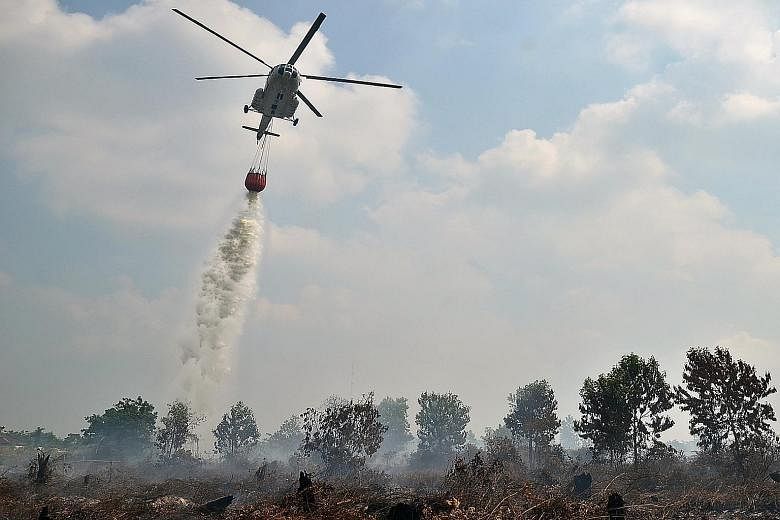As the El Nino weather pattern strengthens, Indonesia said yesterday it would step up its fight against forest fires triggered by dry, hot weather throughout much of the country.
Indonesia is worried about a repeat of the 1997-98 El Nino, which caused severe drought, damaged crops and triggered massive forest fires. The blazes wiped out millions of hectares of forest and plantation areas, and caused losses estimated at US$2.45 billion then. The smoke haze covered much of the region, damaging tourism and causing a jump in health costs.
Fires and smoke have returned in recent weeks, particularly on Sumatra island and meteorologists in Indonesia, Australia and elsewhere are forecasting the current El Nino to strengthen over the coming months. That is expected to exacerbate fires and damage crops such as coffee and cocoa, important exports for Indonesia.
The government has carried out cloud-seeding in Sumatra but officials say it has not been as successful as hoped.
The military will be called in to use Super Puma helicopters for water-bombing operations, Coordinating Minister for Maritime Affairs Indriyono Soesilo told reporters at the presidential palace yesterday. They were last used to fight the 1997-98 fires.
Singapore has offered the use of at least one helicopter to beef up water-bombing operations, but Indonesia has yet to accept the offer, Singapore's Minister for the Environment and Water Resources, Dr Vivian Balakrishnan, said in Jakarta earlier this week.
In Riau, a separate programme involving a pulp and paper firm is training villagers and local police how to fight fires, and is encouraging local communities not to clear land using traditional slash-and- burn agriculture.
El Ninos usually bring drought to South-east Asia and eastern Australia, and wetter and cooler summers to parts of North America, while crimping the frequency of Atlantic hurricanes. They are caused by periodic warming of the Pacific and can roil agricultural markets as farmers contend with drought or too much rain.
The dry spell in the southern regions in Indonesia will strengthen from August to December, with the main impact to be seen in areas including Lampung, South Sumatra, Java and South Sulawesi, the Meteorology, Climatology and Geophysics Agency said on Thursday.
The result of El Nino will be failed harvests in Indonesia, the forecaster said in an e-mailed statement, Bloomberg reported. Lampung and South Sumatra are Indonesia's main growing regions for robusta coffee beans, while Sulawesi is the country's main cocoa producer and Java is the main rice area.
With the shortage of rain, pressure is growing on local and national authorities. The number of hot spots spiked on Thursday. Visibility in Pekanbaru, in Riau province near Singapore, dropped to 800m as Sumatra recorded 326 hot spots, of which 186 were in Riau.
Yesterday, the number of hot spots in Sumatra fell to 76.
In the past six months, Riau police have declared 24 individuals as suspects for illegally burning land and forest, charging them with breaching plantation and environmental laws.

